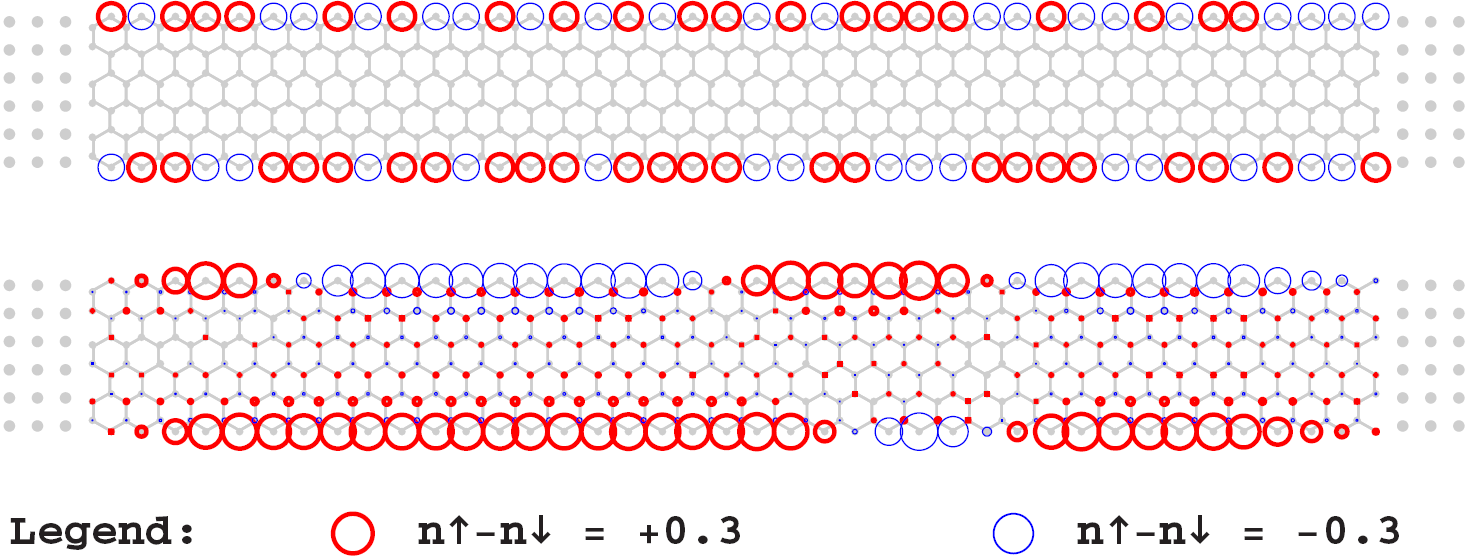So far all experimentally observed graphene nano-ribbons (GNRs) exhibited semiconducting behavior. However, simple combination of nearest-neighbor pi-orbital tight-binding and Hubbard models suggests that the nature of the band gaps in GNRs is different. In particular zigzag-edge GNRs (Z-GNRs) have band gap induced by spin-polarization of the edge states. It is likely that such band gap can be collapsed if a sufficiently large current is passed through Z-GNR. The challenge problem formulates as follows: Find the combination of parameters for experimental setup (applied voltage, contact resistance, and Z-GNR length) required to collapse the spin-induced band gap in Z-GNR.
The following reference provides theoretical background and list specific experimental requirements: D.A. Areshkin and B.K. Nikolic. (2009). “I-V curve signatures of nonequilibrium-driven band gap collapse in magnetically ordered zigzag graphene nanoribbon two-terminal devices.” Physical Review B v.79, 205430.
Figure below presents possible spin distribution in Z-GNR (bottom). Simulation results were obtained for self-consistent spin-polarized model from initially random spin distribution (top).
